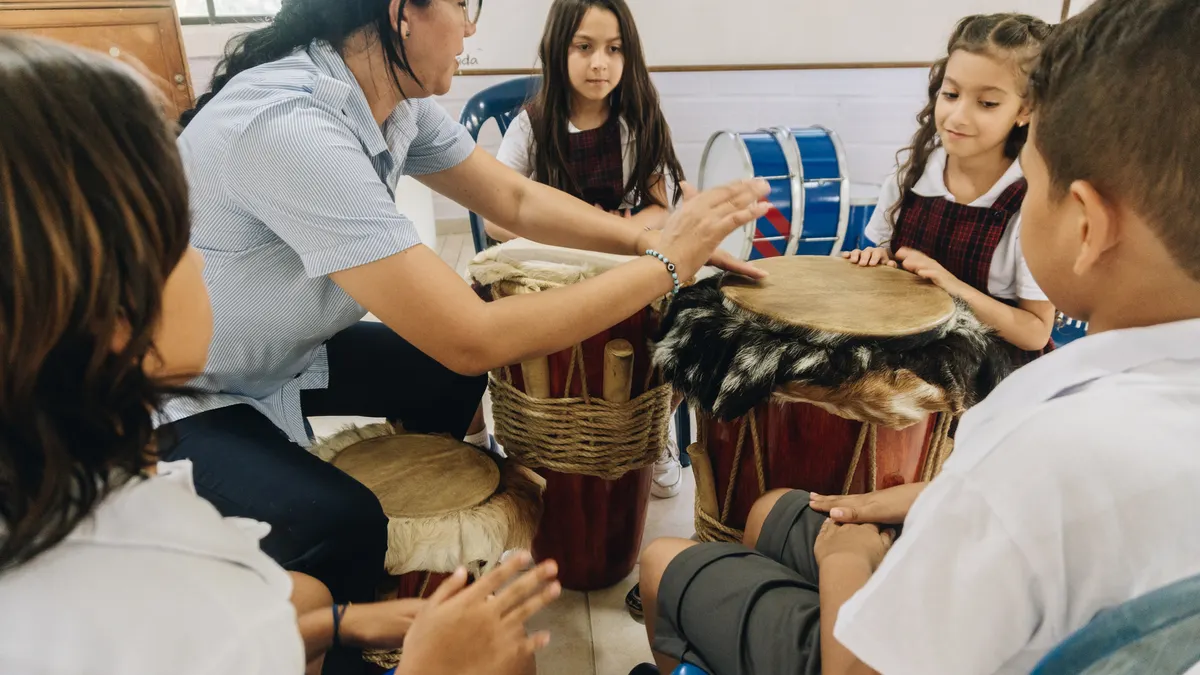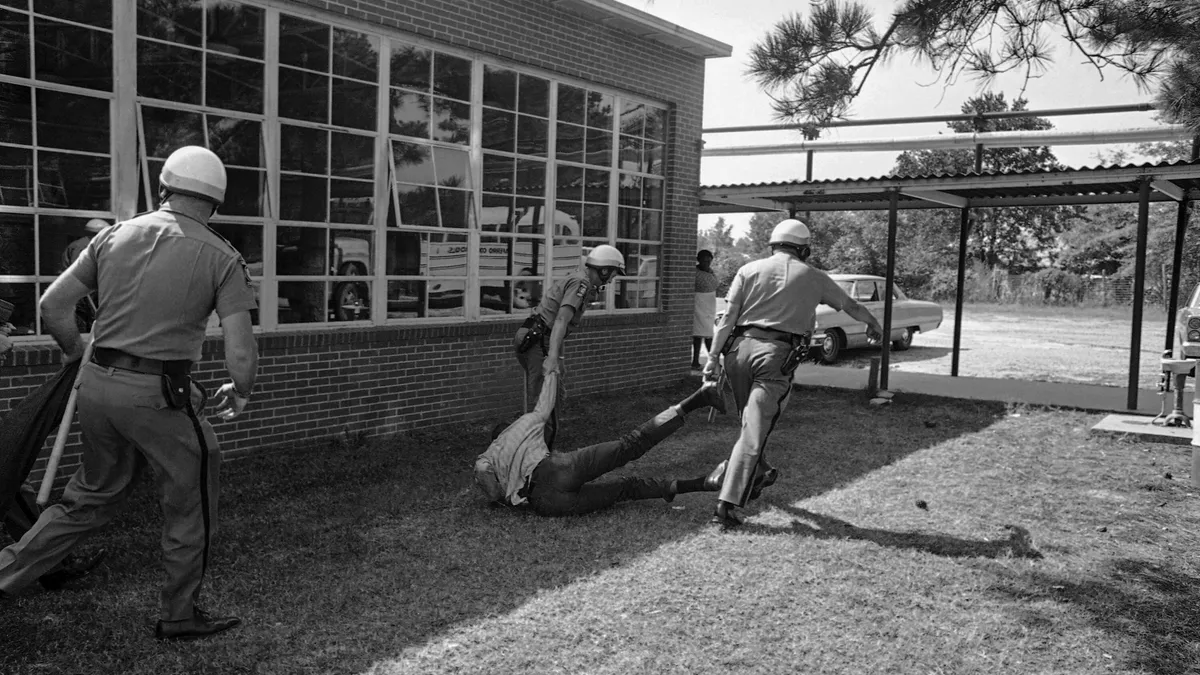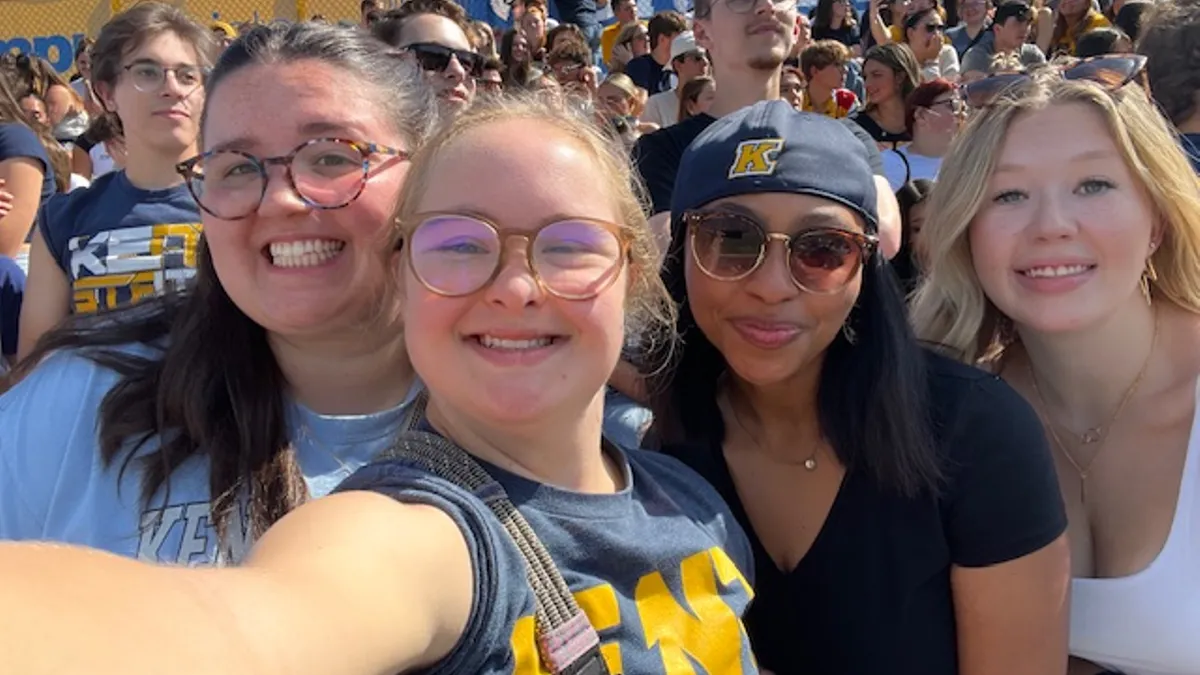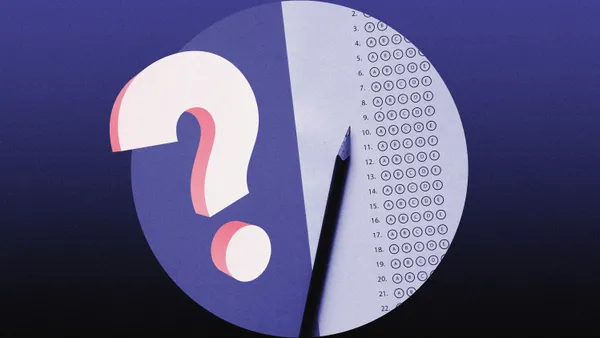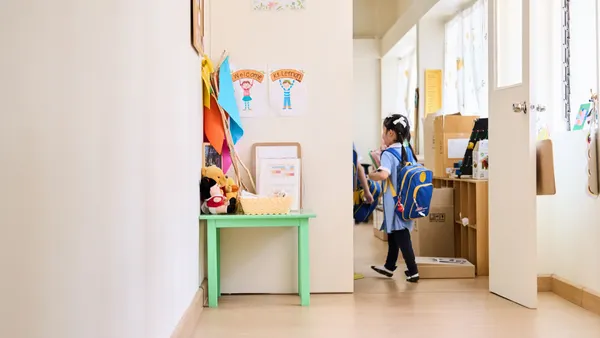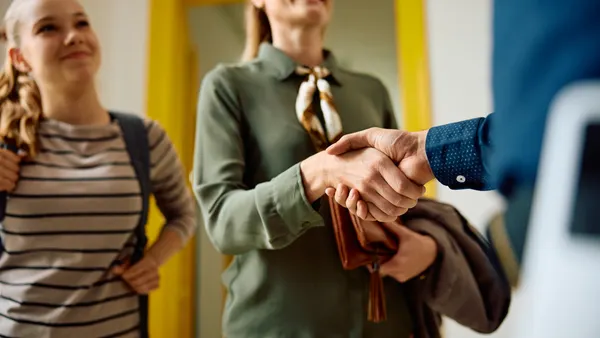Dive Brief:
- Music education — whether that involves learning an instrument or singing — can help students develop skills that will also serve them as they learn to read, music instruction experts say.
- Learning music helps students become more sociable and better listeners, said Stephanie Benischek, the northwest representative for the National Association for Music Education's general music council. It also helps them learn vocabulary and strengthen their attention span, she said.
- “We all remember how to sing the alphabet, and a lot of us learned the quadratic formula to the tune of 'Pop Goes the Weasel' in middle school. It’s a great way to learn things,” said Ryan Greene, the director of membership development for the Music Teachers National Association.
Dive Insight:
A 2020 report analyzing Head Start teachers’ perspectives found that integrating music into everyday classroom routines allowed educators to better meet students’ diverse academic and emotional needs.
Music lessons and learning how to read music directly, for example, can help children build skills like pattern recognition and hand-eye coordination, said Greene.
“If you can learn how to read music, you're already that much further ahead,” he said.
Greene is an independent piano instructor who typically starts teaching students around the ages of 4 and 5. One of the biggest impacts Greene said he’s seen in his students is the development of their self-confidence. The experience of performing and having it go well gives them the confidence to undertake other artistic endeavors that they otherwise wouldn't have attempted, he said.
Benischek teaches K-5 general music at Star Elementary School in Idaho. In her classroom, she helps her kindergarteners build vocabulary awareness through a “movement song” that includes words such as “jump,” “skip” and “gallop,” which students sing and act out.
Educators might sometimes feel like they lack the skills, Benischek said, but they don't need to be the best singer or musician to provide music and incorporate it into their lessons. One simple strategy she suggested is to come up with melodies for storybooks with repetitive lines, and have students join in and repeat them back.
Greene added that educators can also start small by just getting a group of children engaged in music-making through clapping a rhythm or dancing to a song.
Benischek emphasized the importance of relying on music teachers who have experience in using music as an educational tool and can connect teachers with resources like playlists or activity ideas.
Greene highlighted MTNA’s network of local and state music teacher groups as a resource for educators who are interested in learning more about integrating music into their classroom or trying to find an expert in their area.
While schools are very objective and assessment-driven, Benischek said, she hopes educators and school leaders can focus more on creativity. She added that music in early education is especially important, because it exposes students to different pathways.
“More people could probably benefit from just opening that door a little bit, just to see if there's any interest,” Benischek said.


